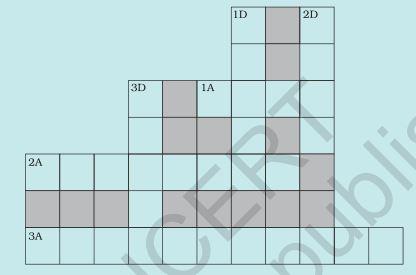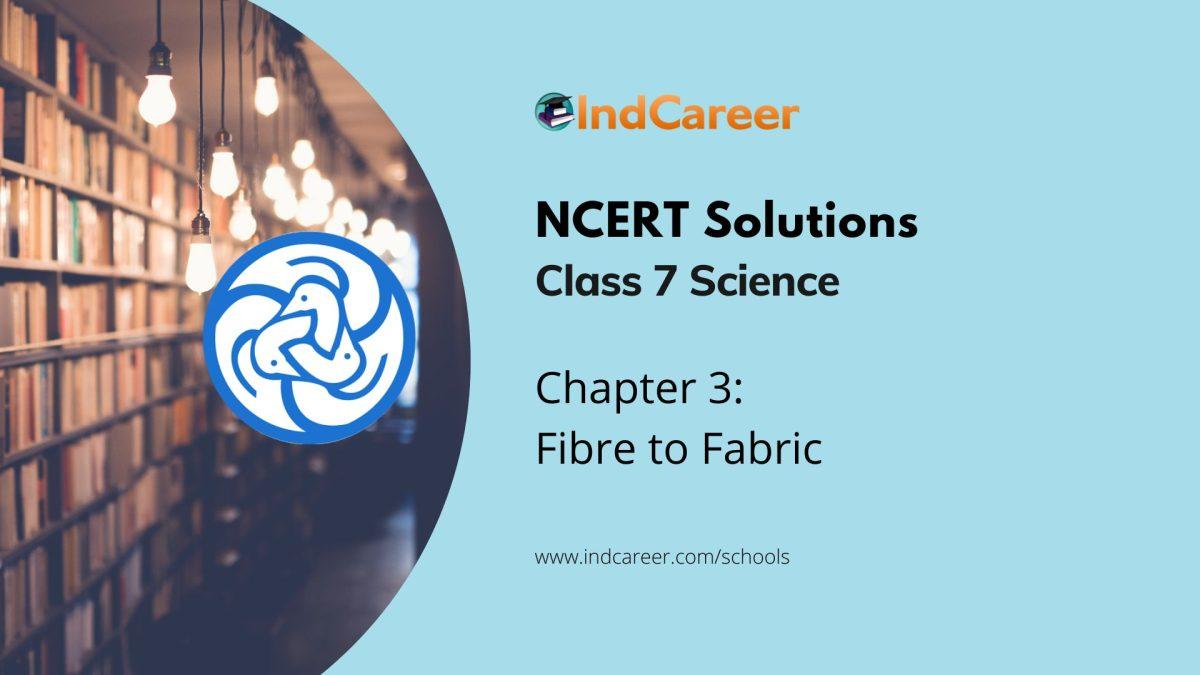Class 7: Science Chapter 3 solutions. Complete Class 7 Science Chapter 3 Notes.
Contents
NCERT Solutions for 7th Class Science: Chapter 3-Fibre to Fabric
NCERT 7th Science Chapter 3, class 7 Science Chapter 3 solutions
Page No: 32
Exercises
1. You must be familiar with the following nursery rhymes:
(i) ‘Baa baa black sheep, have you any wool.’
(ii) ‘Mary had a little lamb, whose fleece was white as snow.’
Answer the following:
(a) Which parts of the black sheep have wool?
(b) What is meant by the white fleece of the lamb?
Answer
(a) The hairy skin i.e. fleece of the black sheep have wool.
(b) White fleece means the white coloured hair of the lamb.
2. The silkworm is (a) a caterpillar, (b) a larva. Choose the correct option.
(i) a
(ii) b
(iii) both a and b
(iv) neither a nor b
Answer
► (iii) both a and b
3. Which of the following does not yield wool?
(i) Yak
(ii) Camel
(iii) Goat
(iv) Woolly dog
Answer
► (iv) Woolly dog
4. What is meant by the following terms?
(i) Rearing
(ii) Shearing
(iii) Sericulture
Answer
(i) Rearing : It means taking care of herds of animals which includes feeding, grazing, breeding, etc. for economical purpose like meat and other useful products.
(ii) Shearing : The removal of fleece of the sheep along with a thin layer of skin from its body is called shearing.
(iii) Sericulture : The rearing of silkworms to obtain silk economically is called sericulture.
5. Given below is a sequence of steps in the processing of wool. Which are the missing steps? Add them.
Shearing, __________, sorting, __________, __________, _________.
Answer
Shearing, scouring, sorting, burrs picking, dying, rolling
6. Make sketches of the two stages in the life history of the silk moth which are directly related to the production of silk.
Answer

The two stages in the life history of the silk moth which are directly related to the production of silk:
Spinning of cocoon of silk threads around caterpillar.
Changing of caterpillar into pupa.
7. Out of the following, which are the two terms related to silk production?
Sericulture, floriculture, moriculture, apiculture and silviculture.
Hints: (i) Silk production involves cultivation of mulberry leaves and rearing silkworms.
(ii) Scientific name of mulberry is Morus alba.
Answer
Sericulture and moricultur
8. Match the words of Column I with those given in Column II:
| Column I | Column II |
| 1. Scouring | (a) Yields silk fibres |
| 2. Mulberry leaves | (b) Wool yielding animal |
| 3. Yak | (c) Food of silk worm |
| 4. Cocoon | (d) Reeling |
| – | (e) Cleaning sheared skin |
Answer
| Column I | Column II |
| 1. Scouring | (e) Cleaning sheared skin |
| 2. Mulberry leaves | (c) Food of silk worm |
| 3. Yak | (b) Wool yielding animal |
| 4. Cocoon | (a) Yields silk fibres |
NCERT 7th Science Chapter 3, class 7 Science Chapter 3 solutions
Page No: 33
9. Given below is a crossword puzzle based on this lesson. Use hints to fill in the blank spaces with letters that complete the words.
Down
(D) 1 : Thorough washing
2 : Animal fibre
3 : Long thread like structure
Across
(A) 1 : Keeps warm
2 : Its leaves are eaten by silkworms
3 : Hatches from egg of moth

NCERT Solutions for 7th Class Science: Chapter 3: Download PDF
NCERT Solutions for 7th Class Science: Chapter 3-Fibre to Fabric
Download PDF: NCERT Solutions for 7th Class Science: Chapter 3-Fibre to Fabric PDF
Chapter-wise NCERT Solutions Class 7 Science
About NCERT
The National Council of Educational Research and Training is an autonomous organization of the Government of India which was established in 1961 as a literary, scientific, and charitable Society under the Societies Registration Act. Its headquarters are located at Sri Aurbindo Marg in New Delhi. Visit the Official NCERT website to learn more.
